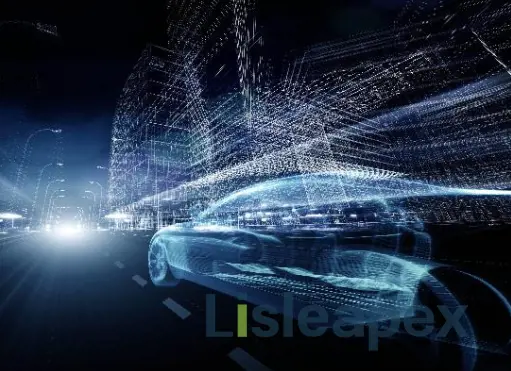Feb
2023
Utilizing High Ripple Current for Smarter Electric Vehicle Designs
22 Feb 2023
The electrification trend in the automotive industry shows no signs of slowing down. Every month, at least one automaker announces a significant development, either introducing new electric vehicles or upgrading existing models.

According to the latest research by market analysis firm Markets and Markets, the electrification of the automotive industry is projected to grow at a compound annual growth rate of 11.9%, increasing from $73.7 billion to $129.6 billion by 2025.
This rapid growth also signifies substantial investments in research and development as electric vehicles continue to gain widespread consumer acceptance.
However, any technological advancement does not occur in isolation. The supply chain has been working extensively to support OEMs, and experts in systems and components are offering innovative solutions in broader areas.
Take electrolytic capacitors, for example. These micro-sized components, through advancements and improvements, have become instrumental in electric vehicles as a reliable source of high-density power delivery, with long lifecycles and fast charging/discharging times.
In particular, hybrid aluminum polymer capacitors have emerged as promising components in automotive applications.
By combining polymer and liquid electrolyte materials, they offer excellent electrical performance for mild hybrid electric vehicle architectures with a 48V system.
The most notable aspect of the latest hybrid aluminum polymer capacitors lies in their ability to provide a very high ripple current capability in compact packages.
When used in parallel with existing 48V automotive inverters, this can reduce the number of required components. Ultimately, this solution can bring about more streamlined and efficient automotive designs.
The Importance of Low Equivalent Series Resistance (ESR)
Now let's delve deeper into the design and performance characteristics of hybrid aluminum polymer capacitors and their applications in the automotive industry.
Similar to traditional electrolytic capacitors, these devices feature a winding structure of aluminum foil and paper contained within a metal can.

The innovation in capacitors comes from the electrolyte, which combines traditional wet liquid with modern conductive polymers.
The polymer enhances conductivity and reduces the Equivalent Series Resistance (ESR), while the wet electrolyte maximizes the contact surface area and increases voltage tolerance.
The combination of these advanced materials and hybrid structures brings about several game-changing benefits.

The Equivalent Series Resistance (ESR) is a critical parameter as it directly impacts the capacitor's peak ripple capability, as well as its heat generation and temperature performance.
The graph below illustrates the extremely low ESR of hybrid structure capacitors compared to traditional electrolytes across the entire frequency range.

When these capacitors operate at their peak ripple absorption limits, the ultra-low ESR of the hybrid structure design significantly improves heat dissipation.
Transient simulations with high ripple currents show that the temperature can be reduced by 20°C with the hybrid structure design.
The low ESR of hybrid aluminum polymer capacitors is essential in automotive applications where efficient power delivery, heat management, and temperature performance are crucial.
These capacitors enable higher reliability, improved power conversion efficiency, and enhanced overall performance in electric vehicles and other automotive systems.
In specific cases such as electric vehicles, the variability of loads and voltage regulation poses significant design challenges for engineers. Vehicle computers, engine control units, DC/DC converters, and 48V inverters require ripple stability and power decoupling in harsh environmental conditions.
Under high ripple conditions, the temperature performance of hybrid aluminum capacitors makes them well-suited for applications that require proper smoothing and power decoupling in demanding environments.
In addition to temperature performance, automotive applications also require high reliability to meet AEC-Q200 standards.
In certain situations, thermal shocks can cause defects in the oxide layer within capacitors, leading to excessive leakage current.
However, hybrid structure polymer capacitors possess a self-healing mechanism where the presence of the wet electrolyte allows for electrochemical growth of the oxide.
This process does not require a specific minimum current and can occur at relatively low local current densities, enabling smooth recovery from any defects. As a result, the leakage is stabilized, ensuring the reliability of the capacitors.
Combining these robust mechanisms with anti-vibration mounting structures allows for easy compliance with automotive certifications.
These capacitors can have rated lifetimes exceeding 3,000 hours, withstand vibrations up to 30g, and operate within a wide temperature range of -55°C to +125°C. It is worth noting that although hybrid structure capacitors may be more expensive than traditional capacitors, their powerful performance allows for stricter rating margins and reliable operation at 90% of the rated value, achieving a cost-competitive design.
By leveraging the temperature stability, reliability, and self-healing capabilities of hybrid aluminum polymer capacitors, engineers can overcome the challenges of load variability and voltage regulation in electric vehicles and other automotive applications, ensuring efficient and dependable operation in demanding conditions.
Hybrid Capacitor Product Dynamics
KEMET has developed a range of new products to meet the market demand for hybrid capacitors, given their significant potential in automotive applications.
All these capacitors, which comply with AEC-Q200 standards, exhibit high power density and low leakage characteristics, and are available in various compact package designs, providing engineers with greater flexibility and options.
The PHA225 capacitor features an axial construction with a polarized full-weld design, tin-plated copper leads, and a negative terminal connected to the case.
The PHA225 is wound within a cylindrical aluminum can with high-purity aluminum lids and durable rubber gaskets. The PHH225 variant, on the other hand, includes a radial crown, allowing for mounting in an upright position.
Both the PHA and PHH 225 capacitors offer high ripple current capabilities in a small size and compact form factor, making them highly valuable attributes for automotive and industrial design applications.

By paralleling smaller and higher power density hybrid aluminum polymer capacitors in existing 48V automotive inverter designs, the required component count can be reduced while maintaining high ripple current performance.
Both PHA and PHH are well-suited for high-power automotive applications, including 48V inverters, cooling fans, water pumps, power steering, and DC-link circuits for braking and injection systems.
These two capacitors also offer other notable performance features, including operating times exceeding 3,000 hours at +125°C, high-temperature characteristics up to 140°C, current ratings up to 40Arms, continuous loading, and self-healing behavior.
Another series worth mentioning is the A780 series, which represents KEMET's first introduction of surface-mount (V-Chip) hybrid aluminum polymer capacitors.
This capacitor series withstands severe vibrations (up to 30g) and meets stringent design requirements for automotive powertrain applications, including engine control units, DC/DC converters, 48V inverters for MHEVs, switch-mode power supplies, and computer voltage regulator modules.
Recommended Industry
-
Utilizing High Ripple Current for Smarter Electric Vehicle Designs
According to the latest research by market analysis firm Markets and Markets, the electrification of the automotive industry is projected to grow at a compound annual growth rate of 11.9%, increasing from $73.7 billion to $129.6 billion by 2025. This rapid growth also signifies substantial investments in research and development as electric vehicles continue to gain widespread consumer acceptance.
-
Thermal Safety Design of New Energy Battery Systems
This article aims to analyze the importance of thermal safety design, market thermal safety issues, solutions for battery system thermal safety design, and thermal runaway warning strategies. It is intended to serve as a reference for implementing corresponding protective measures in the thermal safety design of power batteries.
-
Improving Visibility with DLP® Headlights
Automotive manufacturers are seeking methods to enhance nighttime driving visibility. DLP® automotive technology, applicable to headlights, can improve visibility and support other applications.
Stay updated with Lisleapex by signing up for the newsletter


 Congratulations On Your Successful Submission
Congratulations On Your Successful Submission
 Submission Failure
Submission Failure